Updated: 19 Apr 2008


How To Articulate "Locomotive". |
|  
|
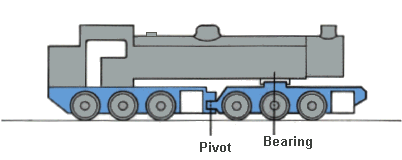 | The Mallet Configuration.
The boiler is rigidly fixed to the rear powered unit. The front engine unit pivots on the rear one, and a sliding bearing takes the weight of the forward part of the boiler.This does not at first appear to be the best way to articulate a loco as the front end of the boiler, being fixed to the rear wheels, sticks out on curves. However it was very popular and successful in the USA |
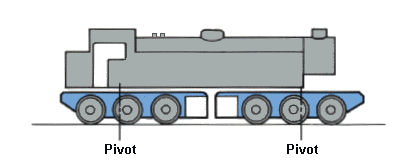 | The Meyer Configuration.
Here the boiler is pivoted to BOTH engine units, rather than one, and so the boiler sticks out a lot less than in the Mallet version.For a very compact example see: The Hunslet geared locomotive. |
 | The Garratt Configuration.
This is similar to the Meyer, except that the boiler is slung between the two engine units instead of sitting on top of them. This allows the boiler to be mounted lower, so it can have a greater diameter and a bigger firebox, and still stay within the loading gauge.
|
The Beyer-Garratts were successfully used all over the world; almost the only place they were never adopted was the USA.
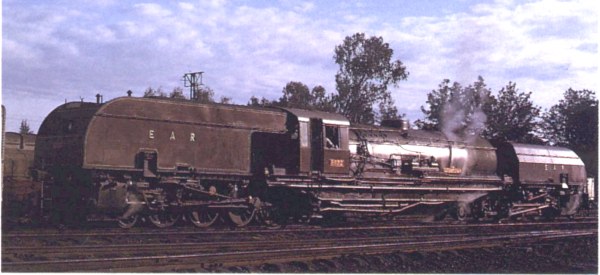 | Left: an East African Railways Garratt
|
All of the types listed above had considerable commercial success, and cannot be classed as "unusual". However, these articulation schemes will be met with in locomotives that had other claims to fame, such as The Flexible Mallets of the USA.
There were other less popular ways to articulate, such as:
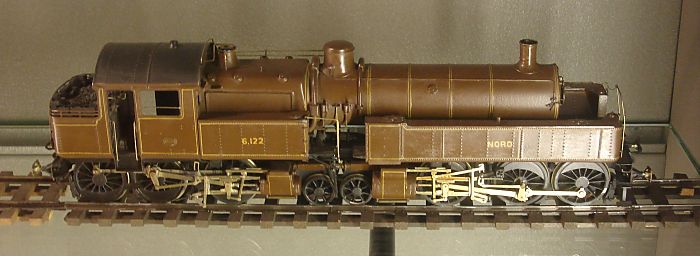 | A model Du Bousquet locomotive.
|
For more info see: The du Bousquet page.
Four locomotives with a 2-6 + 6-2 configuration were supplied to the Ivory Coast railways in 1930, and three more to the Congo-Ocean Railway in what was then the French Congo. (Now The Republic of the Congo) The Congo-Ocean railway received two more of the same type in 1935 and five of a modified 2-6-6-4 configuration. These repeat orders suggest the locomotives were successful, but both railways later adopted the Garratt type.
This design was used in the Ivory Coast.
Weight empty: 68,400 kg
More material on these other types of articulation will be published when I finally locate a Round Tuit.
Books on Articulated Locomotives:
"Articulated Locomotives of North America" by Robert A LeMassena.
Sundance Books 1979. At least 2 volumes.
"Articulated Locomotives" by Lionel Wiener. A classic on the subject.
The Golwé Configuration
These French-built designs were used with success in Africa, but never had a wide following.
The front engine unit swivelled under the boiler in a similar manner to a Meyer locomotive; in contrast a Garratt had its front bogie in front of the boiler. The rear engine unit was placed underneath the tender, in a manner similar to a Garratt; however a Garratt carried its coal and water directly on the rear bogie, while the Golwé carried them on the central frame. The rear bogie cylinders were placed under the cab, at the front of the rear unit. A float-controlled automatic device reduced the cut-off of the rear cylinders to prevent slipping when the water tank was running low; this precaution was not required on the front bogie because there were no water tanks at the front, and the boiler would always be more or less full of water. The firebox hung low between the two engine units, and so could be of generous size.
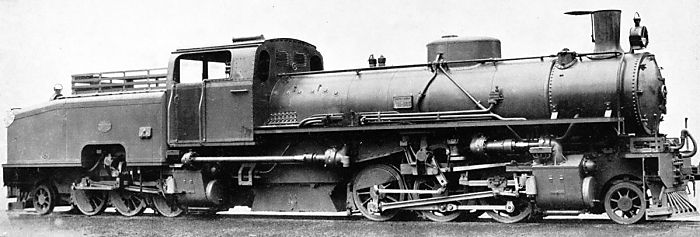
A Golwé locomotive.
Service weight: 87,700 kg
Adhesion weight: 73,00 kg
Image courtesy Claude Bersano
Bibliography
This is a most impressive work. Long out of print, I fear. I have only ever seen Vol 1, and I don't know how many volumes there are in total.


